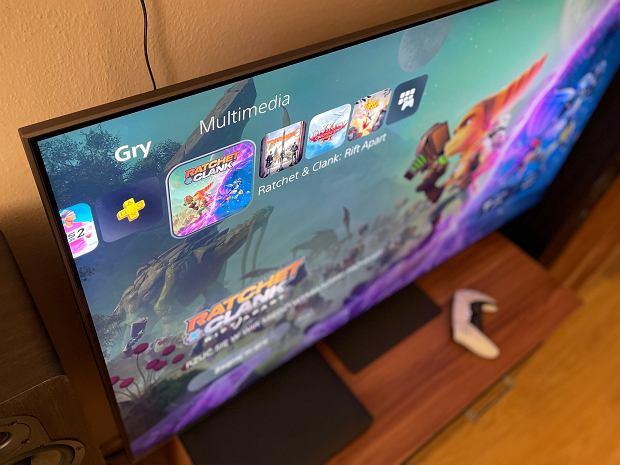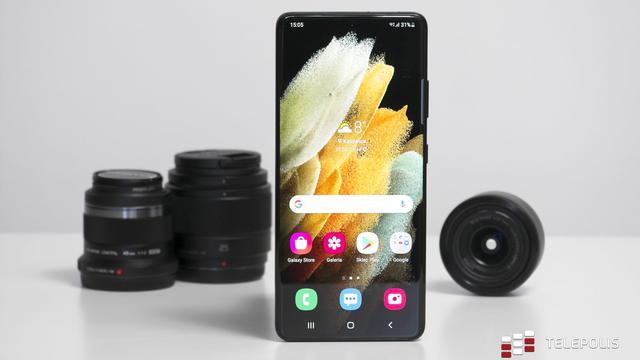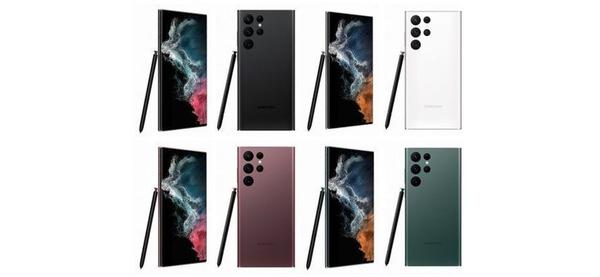We waited and waited and finally got it. MiniLED TVs are starting to enter our homes. This is great news, because the MiniLED technology minimizes (though still does not eliminate) the biggest disadvantage of LCD screens, which so far has been poor contrast and black - especially in compared to competing TVs with OLED matrices.
ADVERTISEMENT Listen to the podcastNeo QLED QN95A, i.e. the hero of this test is one of the first Samsung TVs to be equipped with backlight MiniLED (or Quantum Mini LED - in the nomenclature of this manufacturer) with as many as 731 zones. Was the implementation of this technology successful?
Samsung Neo QLED QN95A - APPEARANCE
QN95A, as befits Samsung's flagship TV, is characterized is minimalist, and with this elegant design. The attention is drawn to both the almost frameless screen and the extremely slim silhouette device, which the depth is only 26 mm.
Obtaining such dimensions was possible both thanks to the use of MiniLED technology (more on that in a moment), as well as by moving all ports to an external module One Connect. Yes, Samsung has returned to this solution, which seems to be a good decision.
And speaking of ports and connectors, we've got plenty of them here. In the "black box" One Connect we will find e.g. 4 x HDMI 2.1 ports. (including one eARC), 3 USB 2.0 ports, an antenna output, or a TOSLINK connector. One Connect connects to the TV via slender cable. It is worth noting that the module houses the power supply, which means that in order to connect the QN95A to the power supply, we do not need to use any additional cable - simple and very convenient at the same time.
The One Remote has undergone a small revolution this year. Samsung has ditched removable batteries. The remote control is equipped with a battery that can be charged via USB-C portor using light sunlight - on backs A small solar panel was placed inside the device.
Samsung Neo QLED QN95A - SCREEN
Samsung QN95A is equipped with a QLED 4K screen with a VA matrix, local blanking and 120 Hz refresh rate. I have written about QLED technology and quantum dots many times in Gazeta.pl. In short, constitutes the next stage in the development of LCD technology. Quantum dots are crystals with a diameter tens of thousands of times smaller than the diameter of a human hair, which have a special property - they can emit light with an extremely pure and natural color.
This year, Samsung adds another novelty, i.e. the already mentioned MiniLED technology. MiniLED is a type of screen backlight, which consists of thousands of small LEDs. In the case of the QN95A model, there are almost 10,000 of them, which translates into 731 independent blanking zones.

Okay, but so what? Thanks to the local blanking function, the TV can control the matrix backlight in a more precise way. Example? A movie scene where we see a lot of black and only one bright object. In a situation where the TV does not have the function of local dimming or there are few zones, instead of black around a bright object, we will see gray.
MiniLED eliminates this problem, and more blanking zones translate into much better contrastand deeper black. And these are not empty promises. I use an OLED screen every day, which offers infinite contrast and the deepest possible blacks. After switching to the QN95A model, probably for the first time I did not have a subjective impression that I was losing something on this exchange.
The statement that MiniLED eliminates the differences between LCD screens and organic matrices would obviously be an abuse. However, I can write thatin terms of contrast and blackness, QLEDs have never been so close to OLEDs. If you do not believe my words, I encourage you to familiarize yourself with the synthetic tests carried out by HDTV Polska.
Excellent blacks, contrast and brightness are not everything. b> is not a common thing. This is the effect of using a special coating that eliminates the problem of color degradation.
The tested TV has a screen with a refresh rate of 120 Hz, which means that it will work very well for watching sports and playing games. Anyway, it will also do great as a central element of home cinema - if only thanks to support for HDR10+ standard.
Watch the video TV manufacturers launched an attack on our wallets. What to pay attention to when buying? [TOPtech]Samsung Neo QLED QN95A - FUNCTIONS FOR GAMERS
The largest TV manufacturers have recently become particularly fond of gamers. It's hard to be surprised. Less than a year ago, next-gen consoles - PlayStation 5 and Xbox Series X were launched. The appearance of these devices is a good reason to buy a new TV . Especially that they offer a number of improvements that we will not see on old TV models.
QN95A has as many as four HDMI 2.1 ports., and this is one of the key parameters that we should pay attention to when looking for a screen for Xbox Series X or PS5. Without HDMI 2.1. we can forget about playing in 4K resolution and 120 FPS.
But that's not all. Another technology that HDMI 2.1 opens up to us is the Variable Refresh Rate. VRR improves the synchronization of the screen refresh rate with the frame rate per second (FPS), causing the image to float.
Example: When we play Assassin's Creed: Valhalla on Xbox Series X or PS5, in dynamic scenes, the number of FPS can drop well below 60 FPS. This causes the effect of "picture tearing". VRR eliminates this problem and - figuratively speaking - "supplements" the image with additional frames.
Another next-gen console technology supported by the Samsung QN95A is Automatic Low Latency Mode (ALLM). It reduces input lag to 9ms in the dedicated "Game" mode. And speaking of the "Game" mode, Samsung has also developed the Player Panel which displays a variety of gameplay information as well as allows you to configure it.
Another novelty that fans of shooters will like is the Ultra Wide View mode, which allows us to take advantage of the 21:9 and 32:9 known from ultra-wide gaming monitors .
Samsung Neo QLED QN95A - TIZEN
Samsung's flagship TVs have been controlled system Tizen for many years. At first I wasn't a big fan of him, but over time we became fond of each other. Ba! In my private ranking, Tizen wins today even with the excellent WebOS from LG.
This year we did not experience any big changes in Tizen. Its central element is still the Smart Hub panel, which gives us access to our favorite applications, image sources and settings. When it comes to the apps themselves, Tizen has everything we need. There is Netflix, HBO GO, Prime Video and also Apple TV (AirPlay 2.0 support). Last year, in the review of the Q90T model, I complained about the lack of the Canal Plus application, but it finally came to the Samsung application store.
Probably the most interesting novelty in Tizen for 2021 is the Multi View function, which allows you to divide the TV screen into two parts. On one of them we can watch the broadcast of the match, and on the other an image sent from the screen of our smartphone - e.g. the latest comments on Twitter.
Tizen also offers the Remote Access function, which allows you to remotely connect the TV to a computer in our home or office and work with Microsoft 365 documents. into a Bluetooth mouse and keyboard.
Samsung Neo QLED QN95A - SUMMARY
QN95A is obviously not a perfect TV. I have reservations about the built-in speakers, which sound quite average. It may be a good idea to buy a soundbar for the device - although surprisingly - the one dedicated to Samsung, which I also had the opportunity to test, sometimes has a lot of problems to communicate with the TV, which "lost the sound.
I'm also not particularly thrilled with the QN95A's default HDR mode, which is sometimes too "fairytale". The idea behind HDR is for the image to "reflect the director's intention" and not be artificially enhanced. Fortunately, this is where the extensive calibration options come to our aid.
ADVANTAGES:
- Quantum Mini LED changes everything
- excellent blacks and contrast
- design
- good viewing angles
- four HDMI 2.1 ports. and extensive features for players
- remote control with built-in battery
- fast and intuitive Tizen
- excellent brightness in HDR mode (OLEDs can look with envy)
CONS
- average audio from built-in speakers
- price
- the image in HDR mode is sometimes too "fairytale"


